On 29th May 1884, the Highgate Hill Cable Tramway became the first cable tramway to be built in Europe. The short line of just under ¾ mile provided a connection between a busy horse tram terminus at the Archway Tavern and Highgate Village, which was at the top of the steep Highgate Hill. With a gradient of 1:11 in places, this was far too steep for horse-drawn trams or buses.
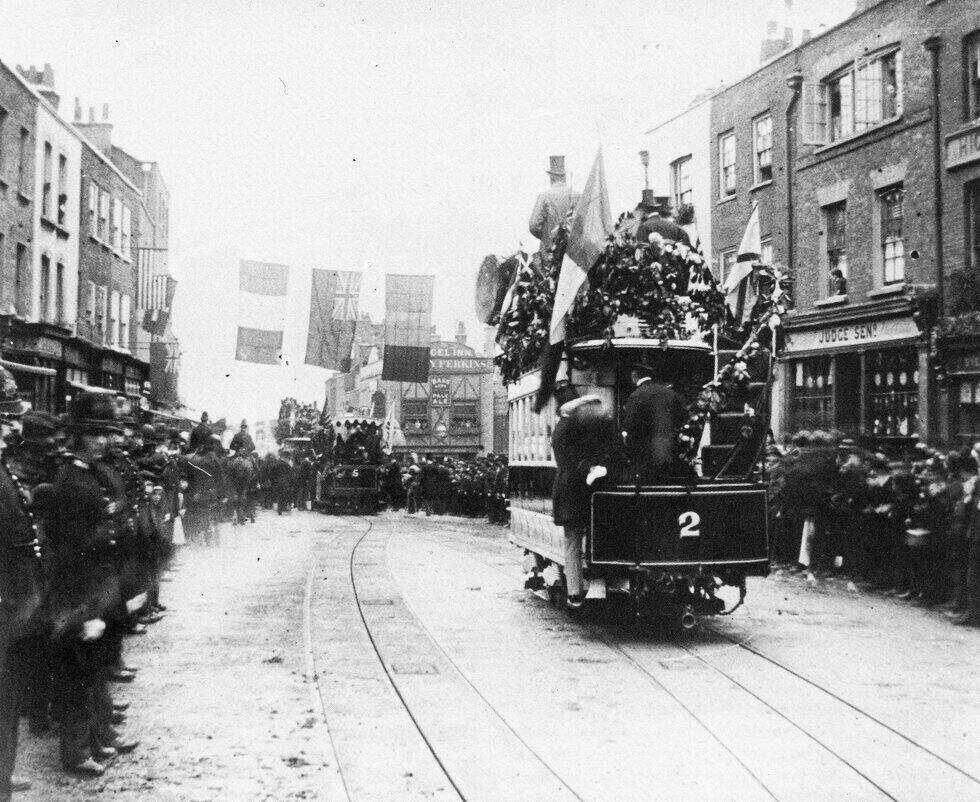
Image 1: The opening of the Highgate Hill Cable Tramway in 1884, showing one of the trailer cars. Photograph by Simon Edwards.
In part, the tramway was intended as a demonstration line to showcase for Londoners the advantages of technology which had been developed by British-born Andrew Hallidie for the successful San Francisco cable tramway. This had opened in 1873. His invention of retractable grippers attached to each car made it possible for them to stop and start independently by either engaging or disengaging with a constantly moving steam-driven cable that was secreted in a conduit below the tramlines. The moving cable could move the tramcars at up to 6.5 miles an hour. It was powered by two 25 hp steam engines located in a winding house with a distinctive tall chimney.
The original rolling stock for the Highgate Hill Cable Tramway was provided by the Falcon Iron Works of Loughborough. The initial batch consisted of three double-deck four-wheel trailer cars (1-3) seating 20 passengers inside and 22 on top, 3 single-deck open sided “dummy” gripper tractor cars (4-6) which also had seats for a few passengers, and two double-deck self-contained gripper bogie cars (7 & 8). Two additional self-contained cars (9 and 10) were added soon after opening. The cars had wheel and track brakes, and speed was limited to 6-m.p.h. The cable was “governed” to this speed, with a 4-m.p.h. limit imposed when coasting downhill through the depot points.
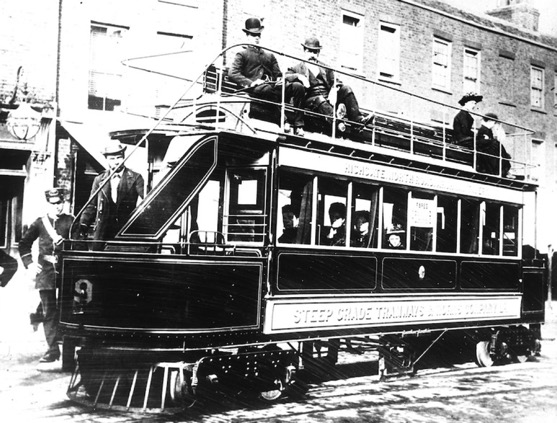
Image 2: Bogie Cable Tram No 9, at the top of the Highgate Hill Cable Tramway line in August 1884, the year the line opened (National Tramway Museum collection).
Other cable tramway lines followed in its wake in Birmingham, Kennington to Streatham in London, Matlock in Derbyshire, Douglas in the Isle of Man, and the Great Orme Tramway above Llandudno. The most ambitious undertaking was Edinburgh’s 26-mile-long city-wide cable tramway network that relied on 13 main cables, the longest of which was 6½ miles, and 12 auxiliary cables located at junctions to enable the cable cars to change direction. Of these systems, the only survivor is the Great Orme Tramway.
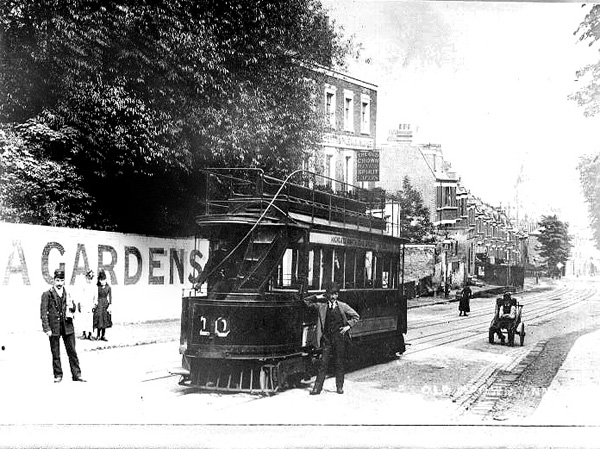
Image 3: Self-contained bogie cable car no. 10 towards the top of the hill (National Tramway Museum collection).
One reason for their demise is that cable tramways were prone to operational problems resulting from cable failure, pulley wheel failure or objects falling into the conduit and jamming the cable. As for the Highgate Hill tramway, once the novelty had worn off, the line was not heavily used and was far from profitable. A fatal accident occurred on 5th December 1892 when a cable snapped, causing a runaway cable car to crash. This resulted in a temporary closure of the tramway. Although it re-opened in 1897, it was unable to compete with recently introduced electric tramcar services. In 1906 the operation was closed down when the police refused to renew its licence until the carriages were put into a proper state of repair.
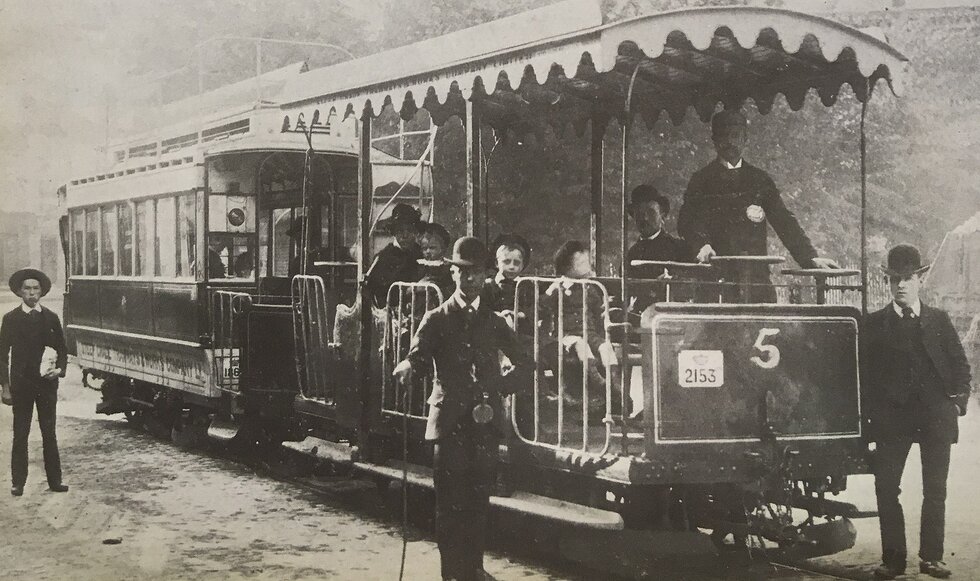
Image 4: One of the “dummy” gripper cars, no. 5, with a carriage on the Highgate Hill cable tramway. Photograph by Simon Edwards.
The line was bought by London County Council for £13,000 and the cable tramway ceased operations on 24th August 1909. The eleven cable trams were sold for scrap. The LCC converted the 3’ 6” gauge line to standard gauge conduit operation, which opened on 25th March 1910. To cope with the unusually steep gradient, the conduit was strengthened to allow for special “slot” brakes which gripped the upper and lower surfaces of the slot rail.
The National Tramway Museum’s photographic archive contains images of the original cable tramway in operation, and the LCC-operated conduit tramway which replaced it. One fascinating item is a colour postcard showing one of the self-contained cable trams about to pass the “Whittington Stone”. This is a monumental stone that was erected in 1821, located at the foot of Highgate Hill. It marks the spot where, in medieval times, a forlorn “Dick Whittington” returning home after failing to make his fortune is said to have heard the bells of St Mary-le-Bow ring out: “Turn again Whittington, thrice Lord Mayor of London.” This prompted him to retrace his steps and carve out a career as a successful merchant and dignitary, becoming Sir Richard Whittington (c.1354–1423), who did indeed serve at least three terms as Lord Mayor.
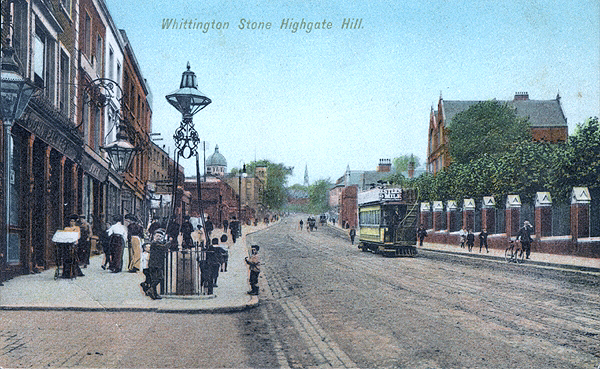
Image 5: Commercial postcard showing one of the self-contained cable trams on a very messy looking street about to pass the Whittington Stone at the foot of Highgate Hill (National Tramway Museum collection).
With thanks to Museum volunteer Jim Dignan for researching and producing this article.
Image references:
All images except those sourced from The National Tramway Museum collection are Licensed for reuse under Creative Commons Licence cc-by-sa/2.0.
Image 1: The opening of the Highgate Hill Cable Tramway in 1884, showing one of the trailer cars. Photograph by Simon Edwards Esq – Own work, CC BY-SA 4.0, https://commons.wikimedia.org/w/index.php?curid=99122764
Image 2: Bogie Cable Tram No 9, at the top of the Highgate Hill Cable Tramway line in August 1884, the year the line opened (National Tramway Museum collection).
Image 3: Self-contained bogie cable car no. 10 towards the top of the hill (National Tramway Museum collection).
Image 4: One of the “dummy” gripper cars, no. 5, with a carriage on the Highgate Hill cable tramway. Photograph by Simon Edwards Esq – Own work, CC BY-SA 4.0, https://commons.wikimedia.org/w/index.php?curid=99105133
Image 5: Commercial postcard showing one of the self-contained cable trams on a very messy looking street about to pass the Whittington Stone at the foot of Highgate Hill (National Tramway Museum collection).
